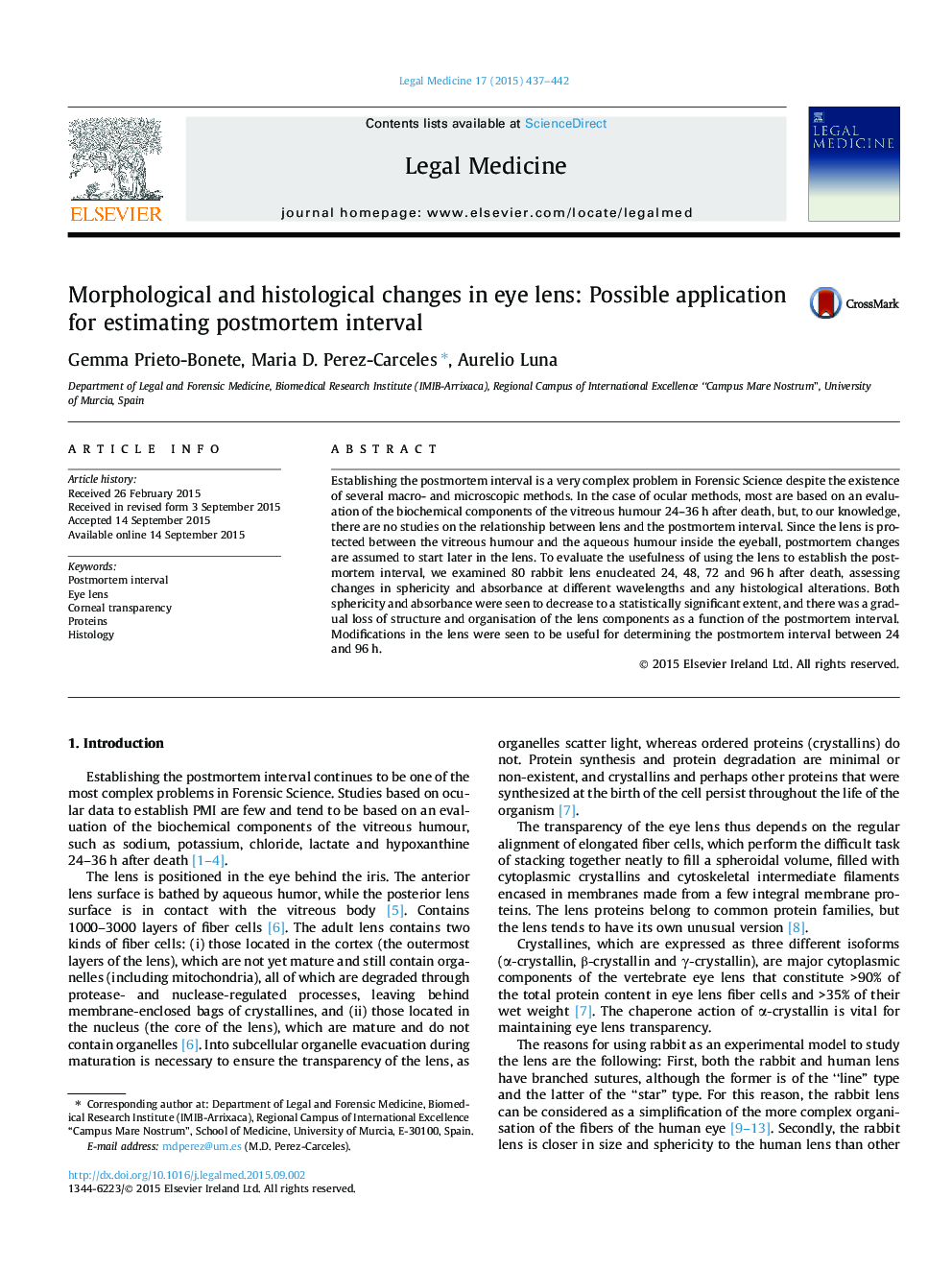| Article ID | Journal | Published Year | Pages | File Type |
|---|---|---|---|---|
| 103463 | Legal Medicine | 2015 | 6 Pages |
•We study changes in eye lens and its possible application for estimating PMI.•Sphericity and absorbance has a tendency to decrease as the PMI increase.•Gradual loss of lens histological structure is a function of the hours postmortem.•Lens modifications to be useful for determining the PMI between 24 and 96 h.
Establishing the postmortem interval is a very complex problem in Forensic Science despite the existence of several macro- and microscopic methods. In the case of ocular methods, most are based on an evaluation of the biochemical components of the vitreous humour 24–36 h after death, but, to our knowledge, there are no studies on the relationship between lens and the postmortem interval. Since the lens is protected between the vitreous humour and the aqueous humour inside the eyeball, postmortem changes are assumed to start later in the lens. To evaluate the usefulness of using the lens to establish the postmortem interval, we examined 80 rabbit lens enucleated 24, 48, 72 and 96 h after death, assessing changes in sphericity and absorbance at different wavelengths and any histological alterations. Both sphericity and absorbance were seen to decrease to a statistically significant extent, and there was a gradual loss of structure and organisation of the lens components as a function of the postmortem interval. Modifications in the lens were seen to be useful for determining the postmortem interval between 24 and 96 h.
Graphical abstractFigure optionsDownload full-size imageDownload high-quality image (133 K)Download as PowerPoint slide
